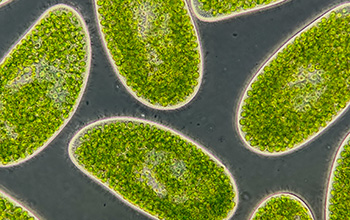Multimedia Gallery
Mixotrophs, single-celled microbes
These single-celled microbes (Paramecium bursaria) called mixotrophs can photosynthesize like a plant or hunt food like an animal. During photosynthesis, they soak up carbon dioxide, a heat-trapping greenhouse gas, and when they eat, they release CO2. Mixotrophs include most of the world’s ocean plankton and many other single-celled creatures, so monitoring their abundance is critical to understanding the global carbon cycle.
[Research supported by U.S. National Science Foundation grant OCE 1851194.]
Learn more in the Duke University news story Little-known microbes could help predict climate tipping points. (Date of image: 2023; date originally posted to NSF Multimedia Gallery: Sept. 8, 2023)
Credit: Daniel J. Wieczynski/Duke University
Images and other media in the National Science Foundation Multimedia Gallery are available for use in print and electronic material by NSF employees, members of the media, university staff, teachers and the general public. All media in the gallery are intended for personal, educational and nonprofit/non-commercial use only.
Images credited to the National Science Foundation, a federal agency, are in the public domain. The images were created by employees of the United States Government as part of their official duties or prepared by contractors as "works for hire" for NSF. You may freely use NSF-credited images and, at your discretion, credit NSF with a "Courtesy: National Science Foundation" notation.
Additional information about general usage can be found in Conditions.
Also Available:
Download the high-resolution JPG version of the image. (2.9 MB)
Use your mouse to right-click (Mac users may need to Ctrl-click) the link above and choose the option that will save the file or target to your computer.

